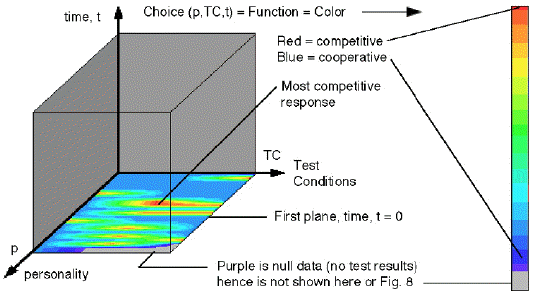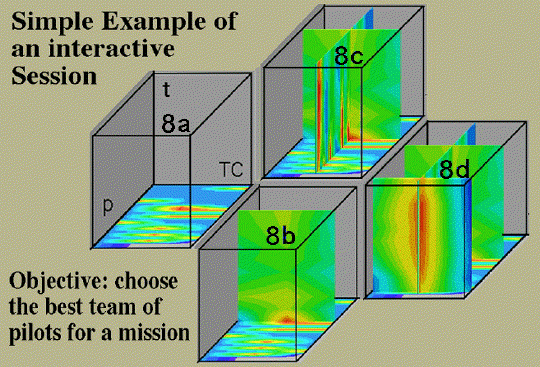
Figure 8. Example of Cognitive Visual Data Compression
Office of Naval Research
Ken Reifsnider, Principle Investigator
Virginia Tech
Blacksburg, Virginia 24061
VT Program Element 1.4b.2 (Led by the University Visualization and Animation
Group)
Our goal in this effort is to explore how to implement Virtual Environments (VEs) in
areas of tactical interest to the Navy. The emphasis in this research will be to design
and evaluate cognitive tools that work best with existing VEs to aid in making tactical
decisions. This program will require that we work closely with key on-site Navy personnel
who are familiar with existing tactical interfaces.
Early research created graphical interfaces that emphasize a cognitive process in making design decisions. Specifically a new visual method called "Cognitive Visual Data Compression (CVDC)" outlined how large tabular and graphical data can be compressed into a parameteric space. Several case studies demonstrated how personnel faviliar with data compressed into this format benefit by using the CVDC cognitive visual method. Figure 8 shows how the data from a personality characteristics evaluation profile, data representing mission test conditions (stress level imposed), and time can be compressed and organized. An example illustrating how such a visula data compression technique might be used is shown in Figure 9. The simulated task is for a squadron commander to select which pilots (based on personality profile parameters) would be the best candidates for a specific mission, based on expected mission conditions by considerting multiple parameters simultaneously. Similar techniques can be used to organize and compress tactical data.


Task Elements:
VT Program Element 1.6.2 (Led by the University Visualization and Animation
Group)
In this program element our goal is to create a prototype system that will allow participants
at remote sites to collaborate in immersive environments. Emphasis will be placed on
creating simple prototypes that can be tested and evaluated using existing high speed
wireless networks. At present we are experimenting with simple prototypes based on a
CAVERNsoft application called LIMBO. LIMBO is a CAVE.net collaborative interface that
allows collaboration within exisiting CAVE applications over high speed networks.
Collaborative environments currently based on LIMBO allow the API fexibility to scale
from the workstation monitor to the larger VE formats such as the large scale CAVE format
previously discussed. We will be priciple CoPIs with General Dynamics on the Command
Post of the Future (CPoF). Test results will suggest how simple prototypes might be
scaled up to larger more comprehensive systems that are more typical of large scale
tactical "Littoral Battlespace".
Task Elements